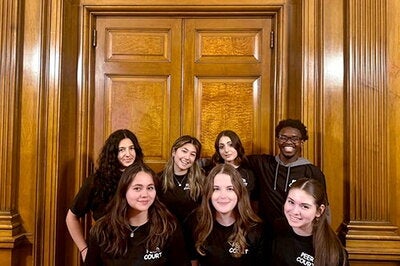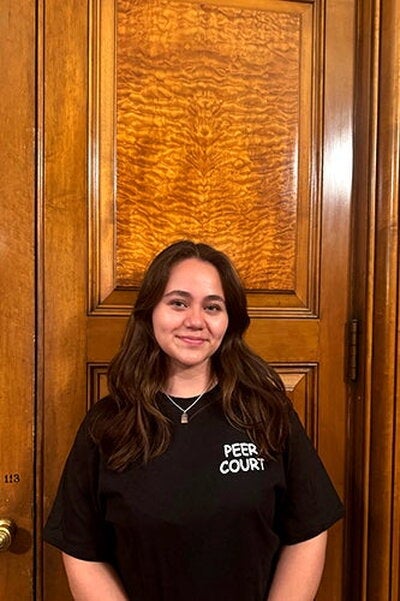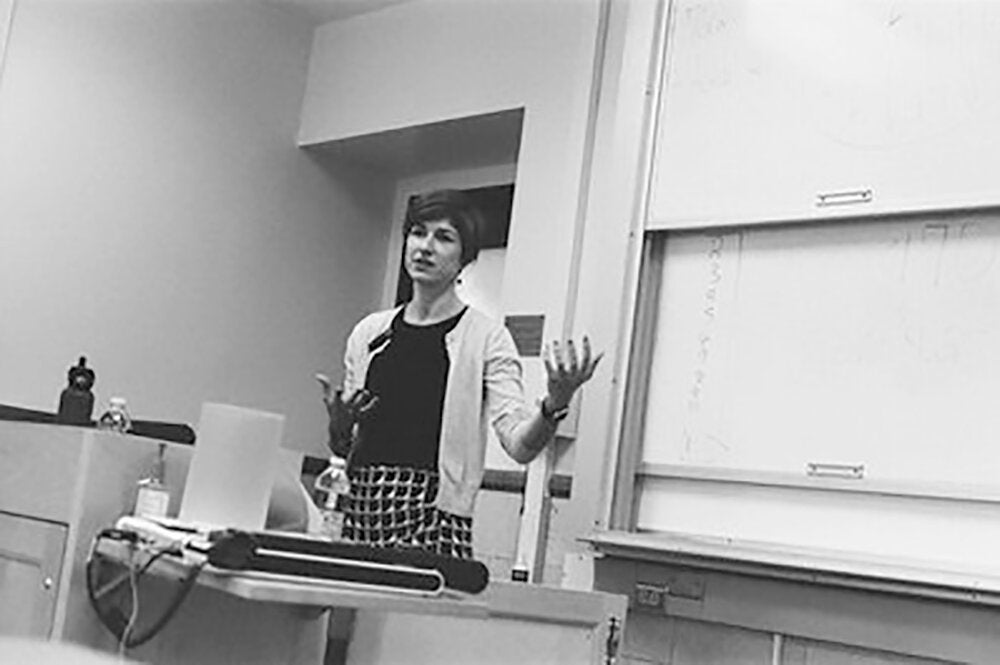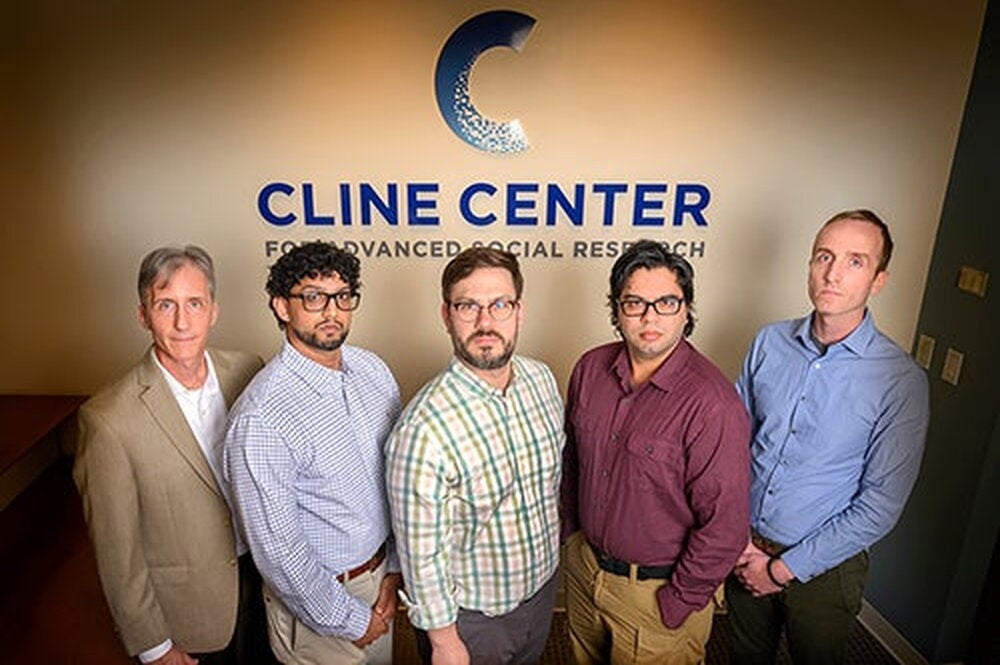
Angelina Correa became a believer in peer court in high school when she served as a juror in the justice program meant to give juvenile criminal offenders a second chance at reform. When Correa, a rising sophomore double majoring in political science and psychology, came to U of I she decided to create her own registered student organization (RSO) devoted to the program.
After discovering that the Champaign County Youth Assessment Center had a program for individuals under 21 to volunteer as peer jurors, Correa initiated a partnership between her RSO and the assessment center during her freshman year.
Peer courts are an alternative to the traditional court system for juvenile criminal offenders who’ve generally committed minor offenses. While regular judicial proceedings can be focused on punishment, youth assessment centers connect juvenile offenders and their families with rehabilitating resources. Peer courts are one arm of those efforts, with juries of teenagers and young adults deciding cases and determining how an offender might be educated or pointed toward reform.
As a member of pre-law professional fraternity Kappa Alpha Pi, Correa built a team of five to eight jurors who met once per week to deliberate multiple cases. The deliberations give the jurors a chance to read through the juvenile court case, meet with the juvenile and their guardians, and then collectively decide on a method of rehabilitation.
Angelina Correa created a peer court organization at U of I after participating in one as a juror in high school. She has partnered the organization with the Champaign County Youth Assessment Center. (Photo provided.)

The types of cases and the reasons why regular courts refer juveniles to youth assessment centers vary, but the end goal is always reform. Kamryn Doughty, program manager at Champaign County Youth Assessment Center, said that the partnership with the RSO began when Correa approached them. She added that the partnership was a natural fit and has helped improve the local peer court program.
“By involving them as peer jurors and collaborators, we’re not only expanding the capacity of our program, but also bridging gaps that often exist in justice work,” Doughty said.
She added: “The students have added depth, creativity, and compassion to our peer court process. Many brought a strong commitment to equity and a desire to understand the complex social factors influencing youth behavior. Their participation helped shift the tone of our deliberations to one that’s more reflective, restorative, and holistic. We've seen increased engagement from the youth respondents, especially when they realize their peers are genuinely listening and working to create fair, rehabilitative solutions.”
Sometimes, Correa finds, the deliberations and conversations with the youth and their guardians about the criminal offense turn into conversations about family relationships. She recalled a time when they were called upon to deliberate the case of a juvenile with a history of consistent delinquent behavior. His mother seemed exhausted and out of ideas.
“She seemed so drained, very tired, and she just didn’t know what to do,” Correa said, “She asked us if we had any suggestions of what she could do to help or better him. We tried to give her resources and the mom seemed very grateful because she had that second or third opinion. It was really nice to see how we were able to help her in that way. We helped them both.”
The deliberations allow jurors to discuss the nuances of each case and choose from different avenues of outcomes.
“We could have them write an apology letter or send them to do community service hours,” Correa said. “But we could also have them join a sport, club, or explore their interests. We can also do any combination but, we try to find a good balance for the child.”
Stephanie Filba, a rising sophomore studying English and psychology and a juror in the RSO, finds the concept of rehabilitation rather than punishment to be the cornerstone of the program. It was a large factor in her decision to join.
“One hundred percent of the time, the goal is rehabilitation,” Filba said. “If you are young and make a mistake your entire life can be thrown off track even if you did something you might not have understood the fully gravity of. There could also be extenuating circumstances that made you act the way that you did. I think peer court is such a great resource because it really allows the youth to see what they did was wrong and be allowed that opportunity to rehabilitate.”
While each case is different, Correa said that parents or guardians often feel that their child or ward are more responsive to peer court deliberations and decisions—and that the peer court may have solutions that they hadn’t tried yet, such as therapy, community service, or even shadowing a local adult in a career they are interested in in.
Janari Anderson, a rising sophomore studying agriculture and consumer economics, initially felt nervous about being a peer juror because he never wanted to cross any boundaries during his questioning of the juveniles and their parents or guardians. The experience in the RSO has helped him come to terms with that necessary skill.
“It was all relevant to my major being on the pre-law track,” Anderson said. “As a lawyer you have to learn how to ask and answer certain questions. I think it’s important to learn how to be able to interact with anybody no matter what age, and peer court really opened my eyes to this.”


